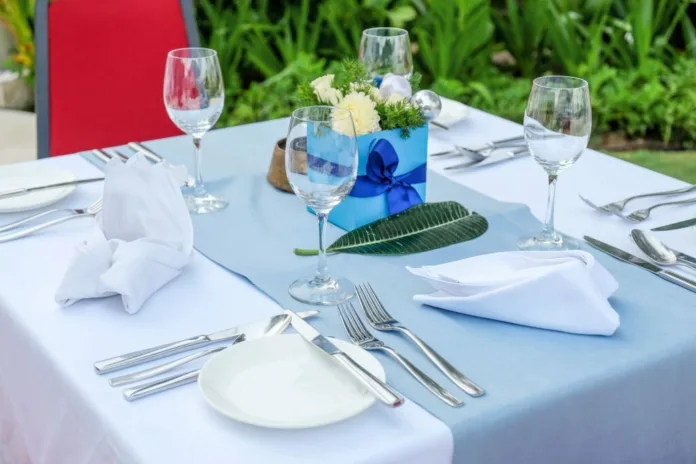A beautifully set table elevates a simple meal into a delightful dining experience, fostering a sense of occasion and creating a welcoming ambiance. Whether you’re hosting a formal dinner party or enjoying a casual meal with loved ones, mastering the art of table setting adds a touch of elegance and enhances the overall dining experience.
1. The Base: Tablecloth or Placemats
A tablecloth or placemats provide a foundation for your table setting, adding a touch of color, pattern, and texture. Choose a tablecloth or placemats that complement your dining room décor and the overall mood of the meal. For a formal setting, opt for a solid-colored tablecloth or placemats in neutral tones. For a more casual setting, consider using patterned placemats or a colorful tablecloth that reflects your personal style.
2. The Focal Point: Dinner Plates
The dinner plate serves as the centerpiece of each place setting and should be the largest item on the table. Place the dinner plate in the center of each setting, ensuring it’s parallel to the edge of the table. For a formal setting, use fine china or ceramic dinner plates in a neutral color or a subtle pattern. For a more casual setting, consider using stoneware or melamine dinner plates in a variety of colors and patterns.
3. Utensil Placement: A Guide to Elegance
Utensils are placed in a specific order based on their usage during the meal. Work from the outside in, considering the sequence of courses. For a basic setting, start with the dinner fork on the left side of the plate and the dinner knife on the right side, with the blade facing inward. If serving soup, place the soup spoon to the right of the knife. Dessert utensils, such as a fork and spoon, are placed horizontally above the plate, with the handles facing to the right.
4. The Beverage Companions: Glasses
Glasses are positioned to the right of the dinner plate, following the order of beverage consumption. For a formal setting, use water glasses, wine glasses, and champagne flutes, each with its designated stem. For a more casual setting, consider using tumblers or glasses that complement the overall table setting.
5. The Napkin: A Touch of Refinement
The napkin adds a touch of elegance and provides a practical function during the meal. Fold the napkin neatly and place it either to the left of the forks, on top of the dinner plate, or in a decorative napkin ring. For a formal setting, use fabric napkins that complement the tablecloth or placemats. For a more casual setting, consider using paper napkins in a variety of colors and patterns.
6. The Finishing Touches: Centerpiece and Lighting
A centerpiece adds a decorative element to the table, creating a focal point and enhancing the ambiance. Choose a centerpiece that reflects the theme of the meal or the season. For a formal setting, consider using a floral arrangement or a collection of candles. For a more casual setting, consider using a bowl of fresh fruit or a decorative tray filled with candles and natural elements.

Additional Tips for Table Setting Success:
Consistent Spacing: Ensure that each place setting is evenly spaced around the table, creating a sense of balance and order.
Cleanliness and Polishing: All utensils and glassware should be spotlessly clean and polished to enhance the overall appearance of the table setting.
Personal Touches: Incorporate personal touches, such as name cards or small favors, to add a unique and welcoming touch to each place setting.
With these tips in mind, you’re well on your way to mastering the art of table setting, transforming your dining space into an elegant and inviting environment. Remember, table setting is not just about aesthetics; it’s about creating a welcoming atmosphere that sets the stage for a memorable dining experience.




